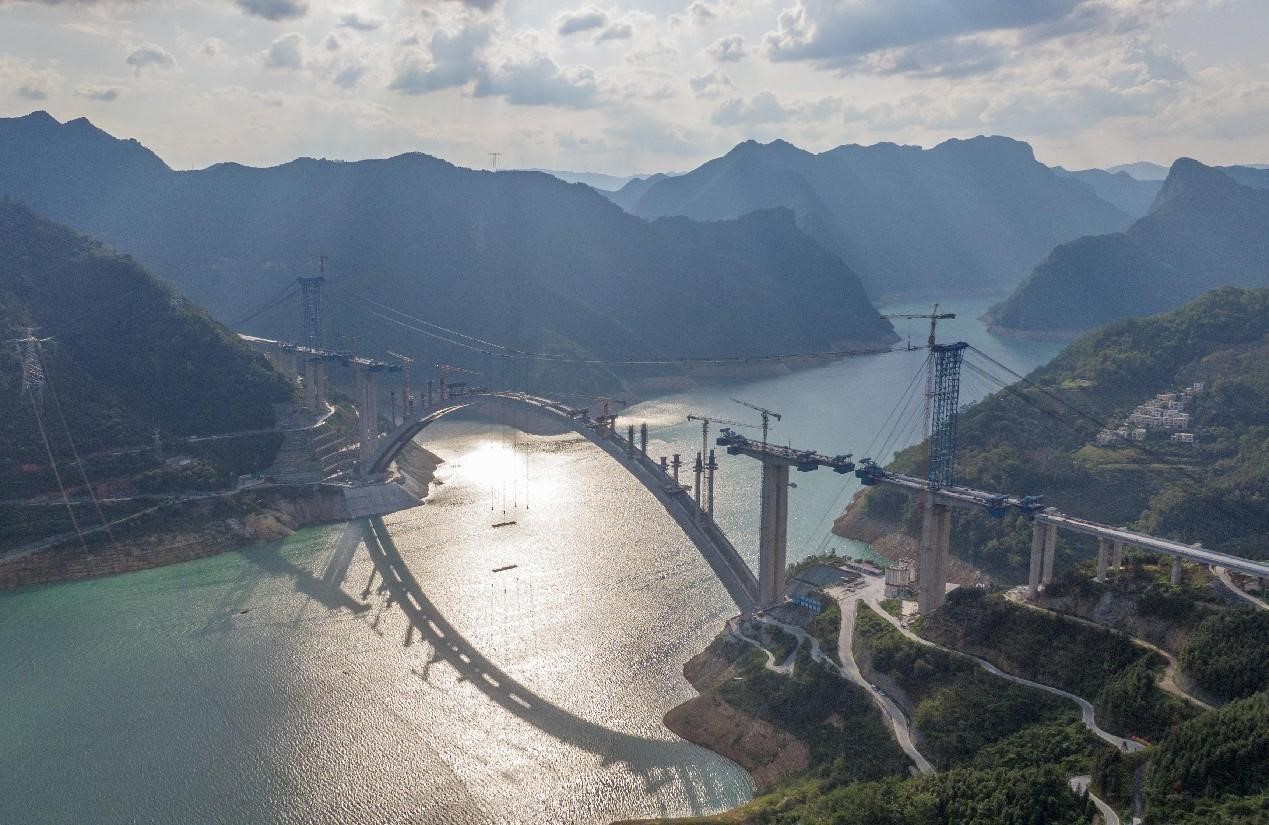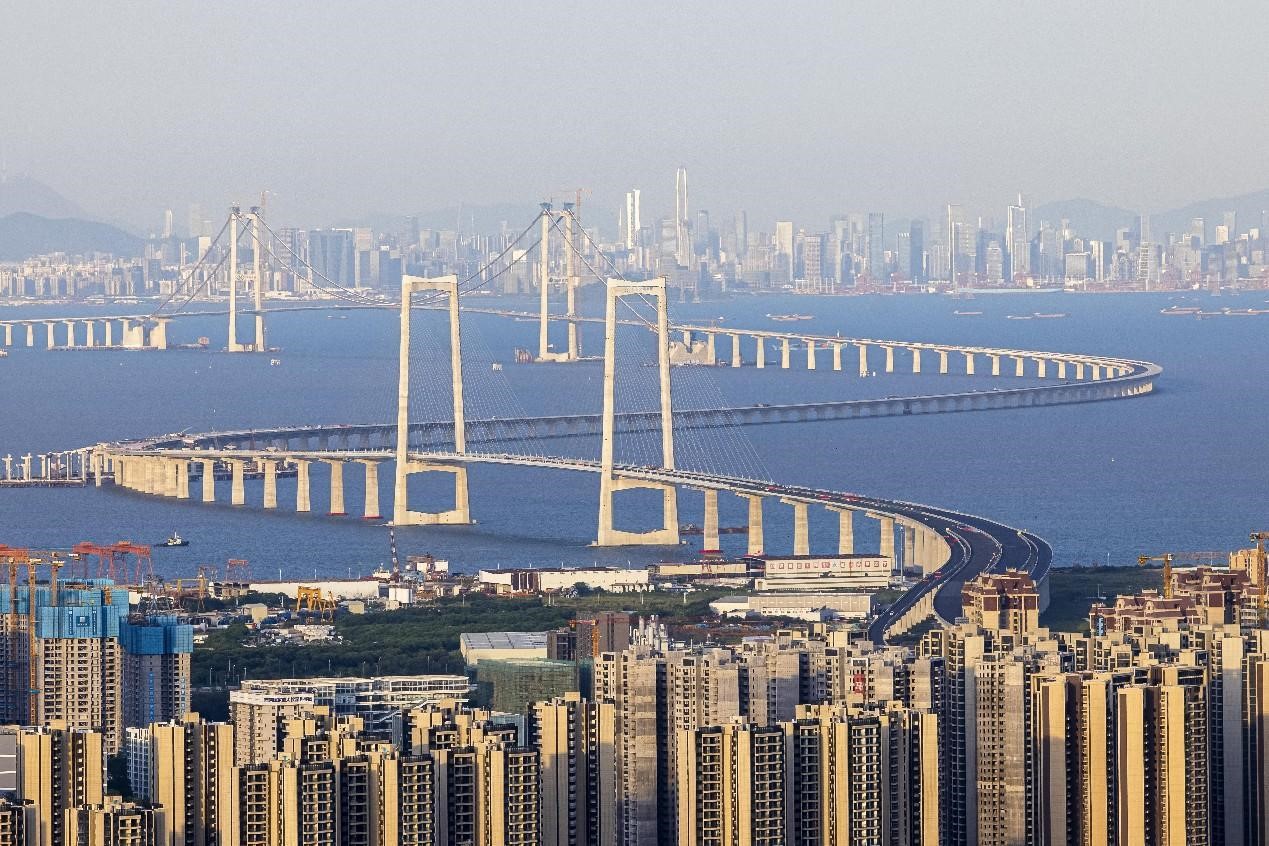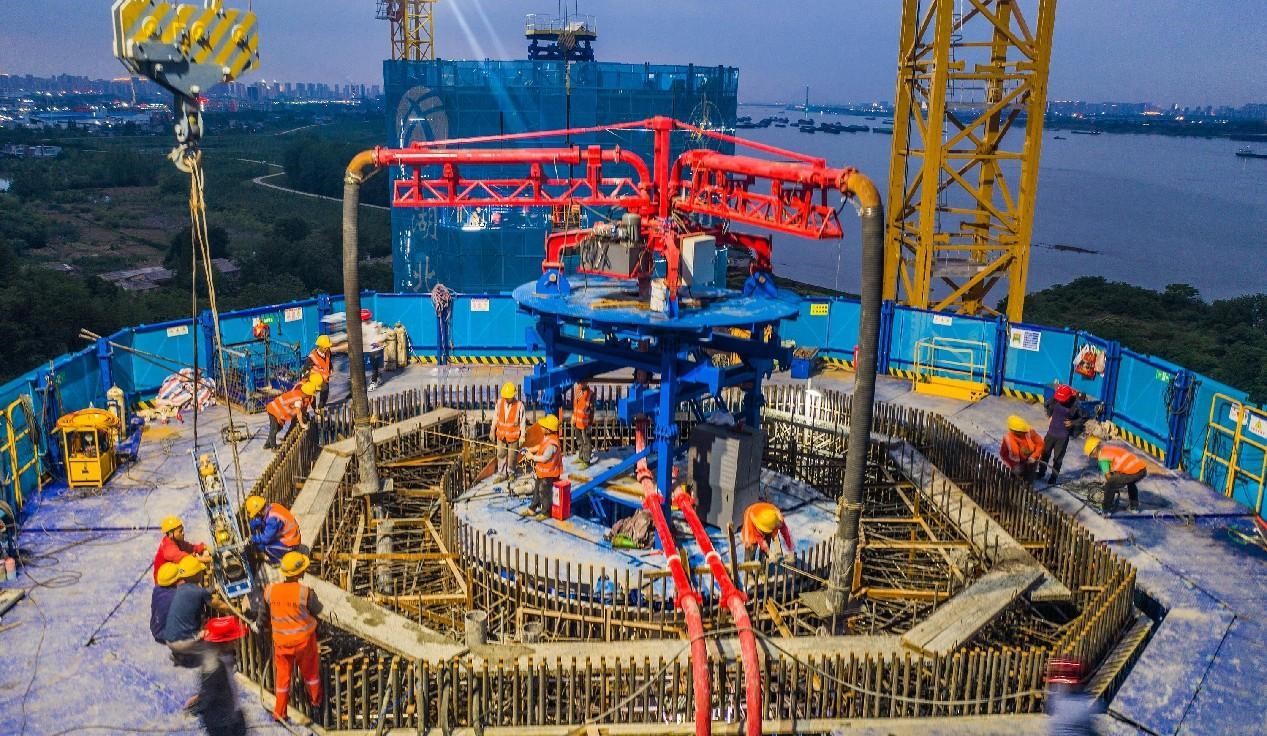China's bridge construction picks up speed

The Tian'e Longtan Mega Bridge in south China's Guangxi Zhuang autonomous region is under construction. (People's Daily Online/Ma Huabin)
Bridge construction across China is accelerating this year. A number of technologically reliable bridges built in various shapes, which cross rivers, lakes, seas, valleys and canyons, are vitalizing the country's economic and social development and contributing to China's vision of building a strong transportation network.
On April 28, the Lingdingyang bridge, which is part of the Shenzhen-Zhongshan link in south China's Guangdong province, got its final segments joined.
The 2,826-meter bridge, a key control project of the Shenzhen-Zhongshan link, has a main span of 1,666 meters and a main tower height of 270 meters. It is the world's longest-span steel box girder suspension bridge in the ocean and the highest sea bridge.
In east China's Jiangsu province, which is situated in the lower reaches of the Yangtze River, the Zhangjiagang-Jingjiang-Rugao Yangtze River Bridge is currently underway. The bridge is 7,859 meters long, with its main section across the Yangtze River measuring 2,300 meters. Connecting Suzhou, Taizhou and Nantong cities of Jiangsu province, it features the longest suspension bridge span in the world.

Photo shows the Lingdingyang bridge, which is part of the Shenzhen-Zhongshan link in south China's Guangdong province. (People's Daily Online/Fu Haiyan)
In the middle reaches of the Yangtze River in Hubei province, the Yanji Yangtze River Bridge, the world's largest double-deck suspension bridge, is under construction. So far, the foundation of the bridge towers on the two sides of it has been completed and the construction of the towers is expected to be finished in April 2024.
About six kilometers upstream of the Longtan hydropower station in south China's Guangxi Zhuang autonomous region, the Tian'e Longtan Mega Bridge is expected to be open to traffic at the end of this year. It will become the world's longest-spanning arch bridge upon completion, with a main span of 600 meters.
These record-breaking structures will be remembered in the world bridge history and make bridge building a signature demonstrating China's strength.
According to statistics released by China's Ministry of Transport, China is home to eight of the top 10 largest suspension bridges in the world, five of which are currently under construction; the country is also home to nine of the 10 longest cable-stayed bridges, and four of them are underway. Besides, eight of the world's 10 longest arch bridges are in China, and two are under construction.
After years of learning and innovation, China now has the technologies and domestically produced equipment to design and build bridges in the mountain, over the sea and across cities, said an official with the Ministry of Transport, adding that China is leading the world in terms of the scale and technical level of bridge construction.

The main tower of the Yanji Yangtze River Bridge in Ezhou, central China's Hubei province, is being constructed. (People's Daily Online/Zhao Guangliang)
Behind China's achievements in building mega bridge projects are the constant breakthroughs made by the country in bridge construction technologies.
China's road bridges boast standard design, industrialized manufacturing, modular construction and informationized control, which help expand the endurance and service life of bridges, said an official with the Ministry of Transport.
Today, intelligent technologies are applied in multiple sectors of bridge construction. For instance, the Beidou Navigation Satellite System is now assisting 3D geological modeling in land survey, with a centimeter-level accuracy. A batch of intelligent equipment has been developed and put into use, including smart steel structure manufacturers, multi-functional tower builders and welding robots, which significantly improve China's capability in building bridges.
As of the end of 2022, China had 1.03 million road bridges, with a total length of 85.76 million linear meters. In particular, 8,816 were super large bridges, with a total length of 16.21 million linear meters.
Bridges can break geographical barriers by crossing rivers and seas, as well as mountains and valleys. As key transportation infrastructure, road bridges have largely improved the transport of the Chinese people, created important opportunities for bettering regional economic exchanges, flow of information and personnel exchanges, and helped increase people's income and promote economic and social development.
Photos
Related Stories
Copyright © 2023 People's Daily Online. All Rights Reserved.









